-
Posts
4,762 -
Joined
-
Last visited
-
Days Won
119
Content Type
Profiles
Forums
Resource Library
Events
Gallery
Blogs
Store
Community Map
Posts posted by Mayner
-
-
8 hours ago, dave182 said:
Just reviving this post as I do a bit of research. Can anyone confirm when 2-axle box vans, like the ones in the pictures at the start of this thread, were finally officially taken out of service? I'm thinking bagged cement must have been their final freight flow? Maybe some departmental PWD use into the 80's?
And again, any further clarification on the markings?
X, scrap
C, I believe Cement is more likely, as we have B on the Beets and D on the diesel tanks
V and V with strike-through?
Trying to establish if any flows made it into the 80's with these vans
The X, C & V markings were only applied to withdrawn stock.
None of the wagons marked with a V in JHBs photo were fitted with vacuum brakes.
I don't know if the V had a specific meaning. Possibly to indicate a vehicle that's with withdrawn and not to be used in service.
C or Cond in the UK condemned.
Some ex-GN vans were lettered "Cement Only" "Return to Drogheda" in (what looks like 4") stencil letters.
CIEs fleet of covered H vans (hard top) were gradually run down and withdrawn from service during the mid 70s.
Cement Traffic was palletised following the introduction of the Pallet Cement wagons in 76.
Dublin-Tralee freight services CIEs last traditional goods train went over to Liner operation in 1978 after a coupling broke on a wagon while climbing the Gullet and the rear of the train ran back into Heuston Station.
I don't think any H vans ran in revenue service into the 80s, the H Vans from an empty Dundalk-Kilkenny keg train were stored at North Wharf Waterford yard awaiting scrapping during the late 70s.
Mullingar was kept busy scrapping redundant H Vans into the early 80s.
-
 2
2
-
-
That makes at least two then.
One would be useful for shunting my Quayside layout.
I will draw up the artwork once I complete the artwork for the GSWR Type B tender.
-
Layout looks brilliant!. Nicely modelled quayside/yard, especially liked the steam cranes and distinctive BCDR wagons with axleguards on the outside of the solebars and curved roofs.
An excellent example of what can be achieved by scratchbuilding when no rtr models or kits are available.
-
 4
4
-
 1
1
-
-
On 12/2/2023 at 8:22 PM, Galteemore said:
It could be an old photo JB, but if you want to read the article he wrote it’s in that 1976 mag ! It’s about clockwork mechanisms, funnily enough. Or could we be seeing the airbrushing and filtering of railway modellers at an early stage? Was this a trend we started that the Kardashians followed?
Drew's article on his collection of small GSWR 4-4-0s appeared in Model Railways in 75-76. As far as I recall locos features included a Kerry Bogie (D19). 52 and 60 Class and an ex-WLWR 4-4-0 all in lined CIE green naturally!
-
 1
1
-
 1
1
-
-
Used to drink Lilt and Sprite back in the day, but gave up on fizzy drinks about 20 years ago due to as they played havoc with my teeth, paid off with very few fillings and lower dental bills.
These days my favourite tipple is crushed apple juice, I usually get an attack of gout after I drink one of our excellent malt rich beers
 , at least I am still (just about) capable of playing trains.
, at least I am still (just about) capable of playing trains.
-
A direct descendant of Martin Atock an Australian engineering academic bought one of my MGWR 2-4-0 kits.
Unfamiliar with railway modeling, he had un-conventional ideas about motorising the loco.
Made it clear that his surname was spelt Atock not Attock.
-
 3
3
-
-
Would anyone be interested in a set of etched 'scratchbuilders" parts for BCDR D1?
We looked at producing a set of detail louvers to assist Tullygraney in his D1 build, but concluded that producing a set of scratchbuilders parts for an entire loco was a better option than producing a set of louvers for a single loco.
The model would be designed on similar principals to the D1 build with the addition of etched louvers.
Its not feasible to provide a price point at this stage without an indicator of potential demand.
Please reply to this thread or Pm if interested.
-
 1
1
-
-
One piece of good news received through the RM this morning a letter from HM Revenue and Customs dated 15th Oct clearing my tax affairs, better late than never
 .
.
-
 1
1
-
-
Brilliant model, those Harland and Woolff diesels certainly have a 1930s Sci-fi Jules Verne look about them.
I think loco crews would have kept D1 fairly clean while working on the Ballinahinch branch and occasional forays on the ex-NCC after the UTA take over.
-
Some locally based suppliers have developed composite kits combining metal and 3D printed construction https://nzfinescale.com/emporium/164-kits/f-locomotive-kit-short-frame-built-pre-1880/
Coaches combine 3D printed bodies and underframe with metal windows and detail parts.
NZ Kitsets are supplied complete with bogies, wheels gears motors.
NZR Sn 3.5 locos and stock run on OO gauge track and tend to be slightly larger in size the 4mm British outline on account of the very restricted NZ loading gauge
I am not sure how many modellers in the UK or Ireland would be prepared to pay £370 for a OO gauge loco kit or £90 for a coach kit!
-
 1
1
-
 1
1
-
-
I think the computer rendered models displayed in newsgroups and on 3D print bureau sites such as Shapeways have contributed to un-realistic expectations of the standard of models that can be produced using 3D printing.
I won't go into what can or can't be modeled/printed on a home computer, designing and successful 3D models involves developing at least two new separate skill sets both with steep learning curves, a lot more complex than downloading a model from the web and printing on a home printer, in my experience not without a lot of trail, error and expense.
While not really suitable for OO or N, I would not dismiss models printed using the SLS (Shapeways Versatile Plastic) or the FDM process for O or larger scale models where a coarse surface texture and the risk of removing/obscuring fine detail is lower than the smaller scales. "Woko" appears to achieve very good results printing FDM models of British Pre-Group locos and stock in7mm including similar 4w coaches to Northroader. https://www.rmweb.co.uk/topic/172854-wokos-bench/page/3/#comment-5082758
A local modeler produces 9mm Scale (slighter smaller than Gauge 1 on O Gauge track) models of NZR locos and stock on Shapeways. The coarse surface texture is barely noticeable in the larger scale, the effect is not unlike steel grit blasted for priming.
At this stage resin printing appears to be the best option for 4mm though the process is more expensive than Versatile Plastic, the results less predictable than the SLS & processed. Currently I am experimenting with resin printed wagon bodies and SLS chassis/running gear as I have been unable to find a Print Bureau capable of printing a chassis in a resin with similar resilient characteristics to the Bureau that printed our original production batch of wagons.
-
 1
1
-
-
8 hours ago, Westcorkrailway said:
The Midland Tank was originally manufactured by TMD (Terry Mc Dermott) in the early 80s before the business passed to SSM (Paul Greene & eventually Des Sullivan) Tyrconnell (Alphagraphix) produced 7mm etched kits including the Midland Tank in GSR/CIE condition.
The kit included parts to assemble to loco in original MGWR as introduced condition and optional parts to build the locos as running on the Waterford & Tramore with modified cab/bunker and valences, but not CIE condition with riveted smokebox, Inchacore chimney and ross pop safety valves.
I built two TMD Midland Tanks and I am not sure whether the chassis in the photo is the original kit chassis or a replacement.
The holes in the side frames close to driving wheels were intended for 'plunger-pick-ups' which were fashionable in the 80s but largely in-effective as a power pick up!
The original kits were supplied with a brass chassis from the same material as the loco body, later kits were supplied with a stronger nickel silver chassis.
The original chassis included rectangular cut-outs for axlebearings-hornblocks as opposed to the usual circular cut outs, the nickel silver chassis was designed with integral beam compensation that provided a measure of suspension to the leading and center driving axles an unusual feature in a chassis kit.

TMD Midland Tank Chassis. Original (1983) foreground, revised Nickel Silver (1990s) background

Original chassis with 80s era motor and gearbox

Underside of original chassis showing bearing cut outs.
Regardless of the origin of the chassis it would be worth while replacing the existing gear with a modern 2-3 stage gearbox such as a Branchlines Multibox fitted to the chassis in the background and a modern can or coreless motor available from Branchlines (advertise in the Modeller and other magazines) or High level kits. Such a gear box with 53:1-60:1 gear ratio will provide reliable slow speed running for a good and shunting loco like a Midland Tank.
A Midland Tank with its relatively simple outline would be a good starting point for scratchbuilding a loco in plasticard or metal, alternatively a second hand Palitoy/Mainline/Bachmann J72 would be a good starting point for kitbashing a plastic injection molded model. Eoin Murray ECM models ran a thread on this news group on converting a J72 into a Midland Tank and "back in the day" a number of modellers "gave up" on the TMD kit and successfully converted Mainline J72s to Midland Tanks.
-
 2
2
-
 4
4
-
 1
1
-
-
1 hour ago, KMCE said:
Yes indeed; the woes I had with the Clayton railcar made the process hardly worth the `
I wonder does the developer know / care about the poor quality or he earning enough from unsuspecting buyer
The Developer started a RW Web thread on the "Next big step in 3D Printing" which appeared to be basically about the options for licensing his designs to potential customers for printing, as opposed to improving the quality of the end product.
The Shapeway's model is based on paying the designer a royalty on each model ordered, which leads to a temptation for developers to produce versions of an identical model in multiple scales to maximise income.
The Shapeways flexible plastic tends to be the default material chosen by designers on account of printability and low cost. A Shapeways resin printed version of the Clayton railcar is likely to cost 2.5-3 times the default version.
Interestingly some designers appear to be producing very good results in 7mm using FDM print technology, but likely to be rough from 4mm or N Scale https://www.rmweb.co.uk/topic/172854-wokos-bench/
-
 1
1
-
-
An Post would have received an Electronic Customs Declaration from the Royal Mail before the item left the UK and could physically reject the package if there was a problem with the declaration.
The last few years have been very profitable for the parcel delivery side of Postal Services such as an Post and Royal Mail with record parcel volumes, An Post was handling between 2.5-3million parcels weekly during 2020-1.
During the past 3 years I had 3 parcels rejected out of approx. 100 shipped to Ireland and the UK through the postal service. Two were rejected as a result of errors in the declaration one as a result of a clerical error by An Post.
Multi-National Logistics Companies.
Courier services such as DHL Expesss, Fed Ex. TNT tend to be quicker, are considerably more expensive than Postal Services, some courier services are less reliable than the Postal Services.
I had good results shipping internationally using DHL but they charge and arm and a leg, their duty and tax paid service works out a lot more expensive that simply paying the Vat and the An Post/Royal Mail Service fee upon arrival.
Import Vat on gifts.
Gifts greater than €45 in total value (including shipping) imported from outside of the EU are subject to Import Vat.
Back in the Day;
For those that do not remember the good old days before Ireland joined the EU Customs Union in 1993 the Irish Customs service were very diligent in carrying out their duties and had a fearsome reputation.
Henry Forbes of the Donegal got into a major dispute with Customs when custom classed the 2 Derwent Valley Railcars imported in the 1920s as road rather than rail vehicles and would not release until the railway paid the customs duty.
Customs Officers at railway stations were thorough charging duty on clothes and food imported from Northern Ireland, an Irish Customs Officer tried to charge my mother duty on a coat bought in a well known Dublin shop.
Customs road blocks on the Swords Road in Santry and the North Road were common on Sunday evenings as Customs Officers checked cars returning to Dublin from Northern Ireland to establish whether the drivers or owners or NI registered cars were resident in Northern Ireland or the Republic.
I was charged VAT on my first order of books from the IRRS London area during the early 80s and on locos from the States during the 90s
-
2 hours ago, Westcorkrailway said:
….funnily enough armed with Thomas the tank engine knowledge, when I first got there around 4 years old I knew it was not a steam engine….as I suspect many kids did that’s to oul Thomas the GNR engine
As a volunteer Guard on a UK Hertiage Railway during the 1990s many of our adult customers thought our Ruston diesels were steam locos!
The vast majority of customers were family groups often with small children who wanted a short affordable train ride who had no particular interest in railways and could not recognise the difference between a small diesel shunter with a cab at one end and a small steam loco.
-
 5
5
-
-
To return to Richard Chown; There is a fairly comprehensive overview of the sheer scale and breath of his modelling from cameo to very large layouts in the Highland Miscellaney Blog https://highlandmiscellany.com/tag/castle-rackrent/ together with "Day Return to Castle Rackrent" & Last train to Castle Rackrent. Interestingly the basement layout was being re-configured and extended before his death with the addition of at least 3 new Block Posts/operating positions (stations, junctions or yards).
There were articles on Castle Rackrent in Model Railway Journal 234 and 202.
234 "Castle Rackrent-a celebration and a challenge" (one page) Celebrates the layouts 40th year in operation and looks forward to the planned re-configuration and enlargement of the layout.
202 "Fair Day at Moygraney" provides an overview of operating the layout and includes a schematic of the running lines & block photos and colour photos of all five stations.
Castle Rackrent Moygraney and Pacific featured as Railway Modeller 'Railway of the Month" in February 78, the article (black and white!) included a track plan of the original layout and its 'Extensions".
The layout was modular in nature and appeared in different configurations depending on the space and the number of operators available at exhibitions and normally lived in a very large purpose built layout room.
-
 2
2
-
 2
2
-
-
Owen.
Good to see your taking the initiative to produce a 3D Model of a MGWR 6w coach.
The coach and window profile and paneling on MGWR 6w Atock coaches are distinctive and quite unlike that used by other Irish companies.
The windows had rounded top and right angle lower corners. The MGWR used half round strip to cover the panel joints.

The panel layout appears to have varied between batches of coaches as they were built at Broadstone.
A number of Padraic O'Cuimin Broadstone Series (un-dimensioned) drawings of MGWR 6 wheelers are available in the Resources section of this newsgroup. The IRRS Flickr group is a good source of photos of these coaches, the IRRS published a compendium of MGWR coach GA drawings including the 6 wheelers.
-
 7
7
-
-
I was lucky enough to see Richard Chown's Castlerackrent in the flesh at a small exhibition in rural Perthshire, possibly Abernethney during the 1990s and the late David Walker's Killanney layout a Yorkshire Castlerack offshoot.
I met Tony Miles at a Bristol exhibition in the late 80s and was invited into the operating well of the partially completed second Advaoyle layout.
Apart from his considerable technical/modelling ability effectively developing fine scale 4mm standards or P4 independently of the Model Railway Study Group, he seems to have had a great ability to recruit groups of like minded modelers to work on his two Adavoyle Layouts first on Merseyside, the Aberyswyth before finally settling in Ludlow.
Richard Chown a BR engineer likewise recruited a large team to regularly operate his Castle Rackrent, basically an Irish pre-amalgamation American style operating layout with several stations which could be arranged in different format for exhibitions.
I was inspired by Castle Rackrent ever since it appeared in the Modeller some time in 75-76 but never got round to building a successful Irish 5'3" gauge layout though I have managed to build a fair number of locos and stock during the last 40 odd years.
-
 3
3
-
-
Settings changed so that prices for Irish, European, UK and US customers appear in the local currencies, excluding local sales taxes.
-
 1
1
-
-
The Maine 2' 0-4-4T and 2-4-4T were the Forney Type commonly known as Forney's, curiously I had a Forney and an almost identical Piko "Grizzly Flats" Depot (station building) on my G Gauge garden railway
-
 1
1
-
-
A (very) small number of wagons are currently in stock and available on our website https://jmdesignmodelrailways.com/
Models available include, CIE 20T Goods Brake, Bulk Grain Ranks Ireland No2, GSR/CIE Std Open wagon, LMA & GSWR/GSR/CIE planked vans.
Despite a number of promising test prints, I have been unable at this stage to identify a manufacturing partner capable of consistently producing SLA (resin) prints of our wagons to a similar standard of quality to our original manufacturing partner.
Currently I am working on the CAD work for a set of etched brass parts for the GSWR 2740 Gal tenders built for use with the 60 Class 4-4-0s which were sometimes coupled to 52 (D17) and 101 (J15) class locos used on long distance work and am open to expressions of interest in the Tender and possibly a set of parts for a 60 Class loco.

-
 9
9
-
-
Didn't realise that you had started work on a city terminal, the photo of the B121 and A16 poking out under the footbridge and overall roof certainly captures the look of the prototype.
There were plans in the early 1900s for a city center terminus off Sackville/O'Connell St similar to an American Union terminal served by all main line companies serving Dublin. It would have had to be on a compact footprint being built in an already built ud densely populated city center area.
Funnily enough I worked in the Minories in the City of London during the late 1980s, in the evenings I used to travel home from Aldgate Station a compact through terminal station on the Circle Line. London Transport operated a direct limited stop peak hour services from the terminal platforms at Aldgate over the Circle Line and Metropolitan Line to Amersham, Chesham and Uxbridge, travelling at speed in LT A stock on the above ground sections of the Metropolitan Line could be an interesting and exciting experience for anyone used to the sedate progress of the DART
-
 1
1
-
 1
1
-
-
New arrival at North Wharf

I treated myself to a DCC fitted Hornby Peckett for use as 'Dock Shunter" at North Wharf.
In theory the yard at North Wharf is part of a dock railway complex owned by a Port and Docks Board which owns and operates its own locomotive(s) with the main line company delivering and collecting complete trains of wagons.
The Peckett also turned out to be a bargain marked down to roughly half price from $280 to $140 approx €85, apparently the DCC fitted loco turned out to be a slow seller as some of the more recent non-DCC Pecketts were selling at over $300.
She turned out to be a smooth runner and a strong puller, interestingly Westminister worked at Blue Circle Dunstable Cement Works a site I checked out while living in the UK during the late 80s after I developed an interest in Industrial Railways.
The Dunstable (Houghton Regis) plant closed in the early 70s but was converted to a distribution depot which continued to receive cement by rail into the early 1990s with a pair of yellow diesel locomotives used for shunting cement wagons. I disposed of my collection of Blue Circle presflow wagons about 10 years ago but still have a large number of 16T BR Mineral wagons and Iron Ore Tipplers (all kit built) if (when) the BR Industrial modelling bug again bites
-
 7
7
-
 1
1
-
-
Fish traffic from Valencia Harbour is likely to have been heavy into the late 50s, the 2:30pm Valencia Harbour-Tralee 'Perishable" connected with the Night Mail with a 3:50am arrival at Kingsbridge is likely to have carried urgent fish traffic for export and the Dublin Fish Market.
There was lobbying for Congested Board funding for a rail served fish pier at Valencia Harbour, but nothing happened apparently as a result of rivalry between Valencia and Kenmare interests.
Fish traffic from Valencia appears to have been mainly carried in Standard IRCH wooden bodied vans (similar to Provincial Wagons std GNR van), the standard vans with some louvred examples appear in the majority of photos of the the station.
MGWR Fish Vans:
The MGWR vans appear to have been used to carry both meat and fish traffic, their classification varied between Fish and Meat Vans at various stages under MGWR ownership.
The vans appear to have lasted into the late 1950s there is a FW Shuttleworth photo of the consist of Night Mail at Sligo which includes an ex-MGWR Fish Van and 6w TPO coupled to recently introduced Bulleid 4w vans, there is also a late 50s photo of a Fish Van at Manulla Junction.
Photos in GSWR days which show single MGWR Fish Vans coupled next to the locomotive in Achill and Ballina Branch line passenger and mixed trains indicates that fish traffic originated at Achill Sound, Killala and Ballina. The consist of the Ballina Branch train was made up of a Fish Van and 3 w wheelers, the Achill Mixed a Fish Van, ex-MGWR bogie coach, 6w van, followed by a string of wagons.
The etched parts for the MGWR Fish Van is available to order, some of the castings may be available from Dart Castings/MJT
-
 1
1
-
 1
1
-
.png.c363cdf5c3fb7955cd92a55eb6dbbae0.png)

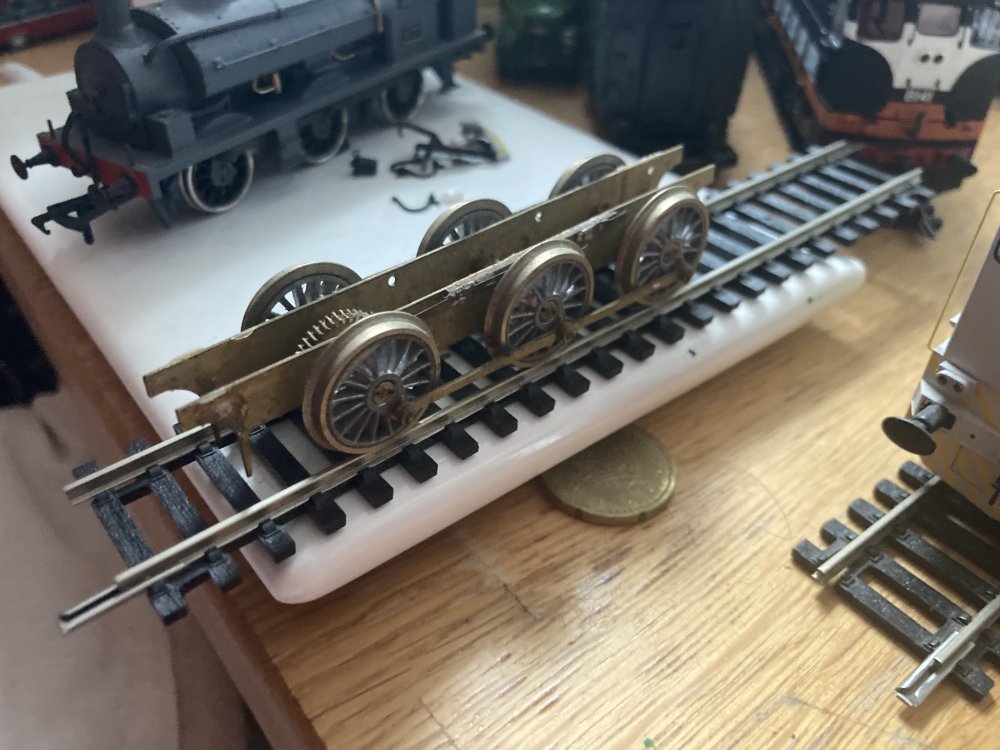

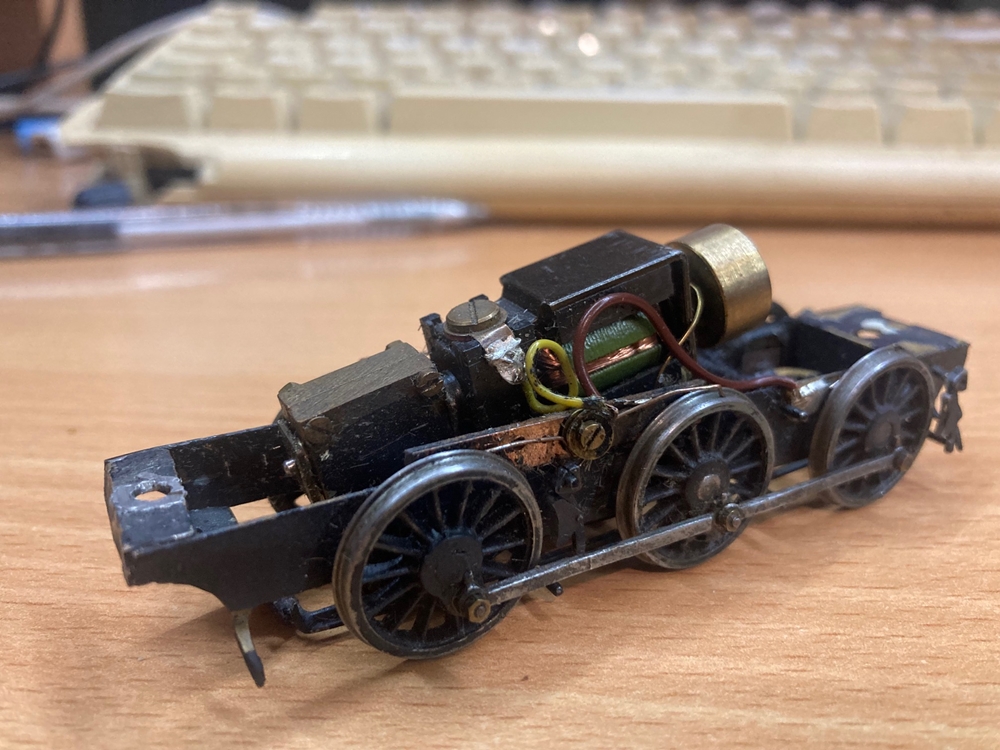
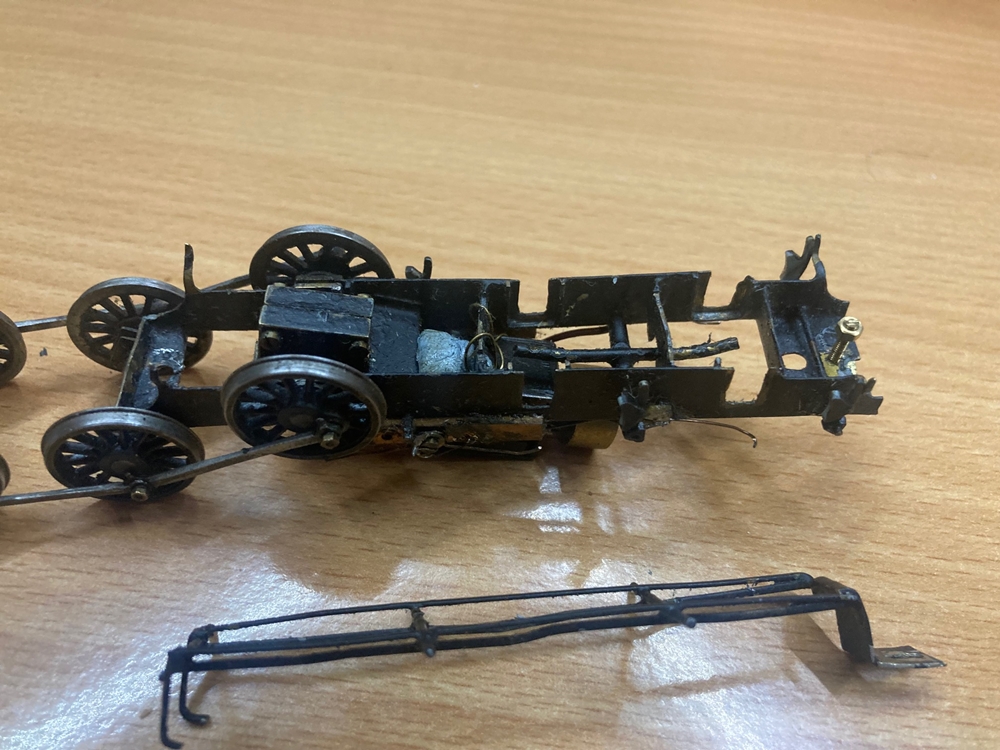
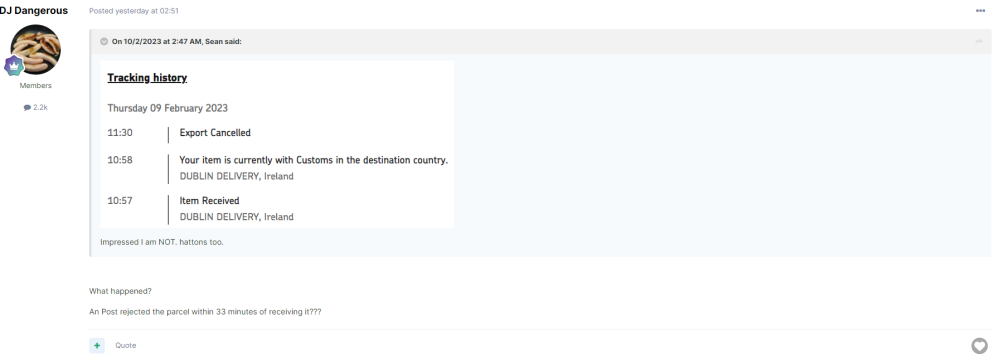
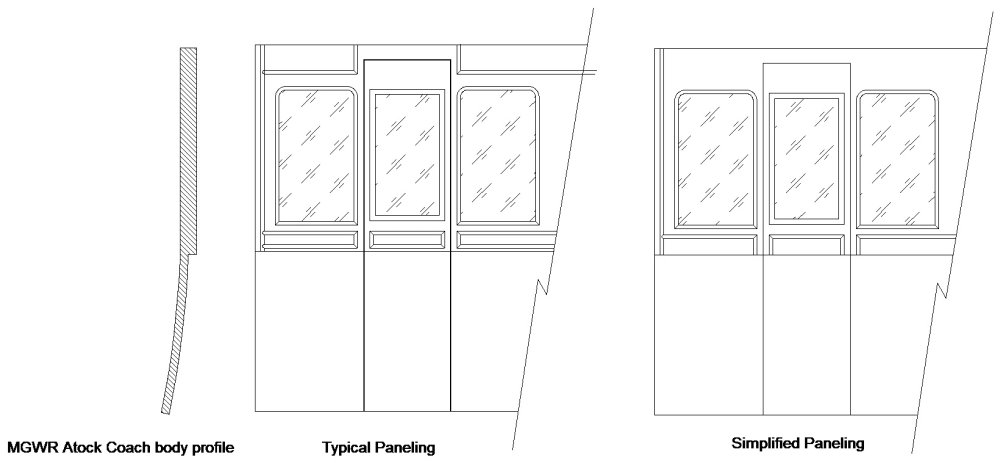
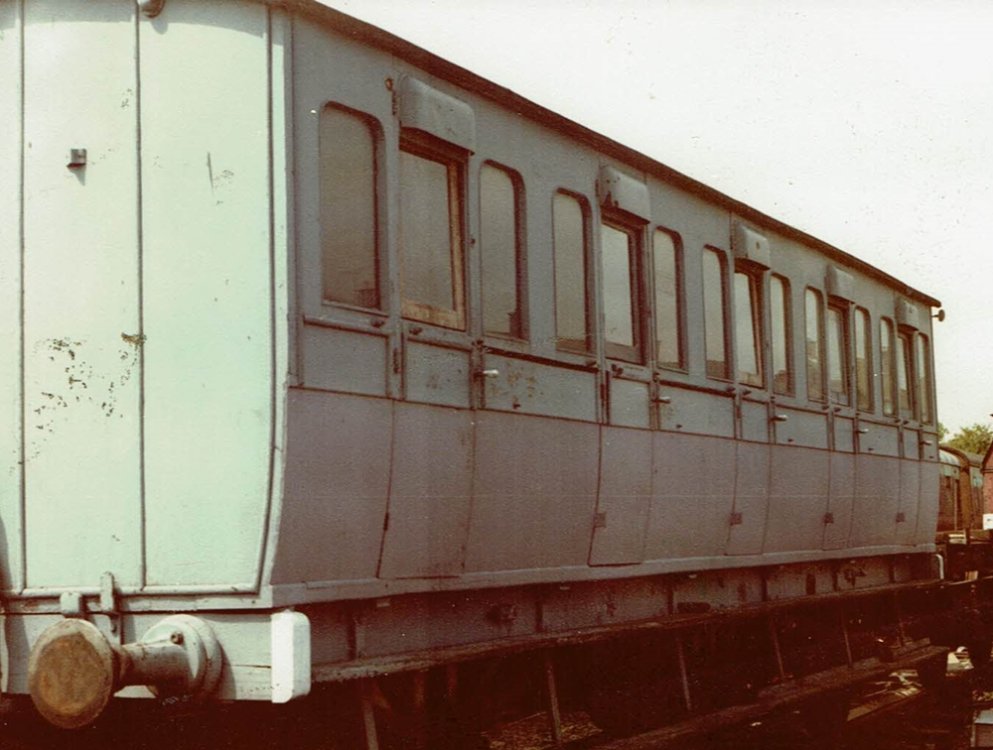

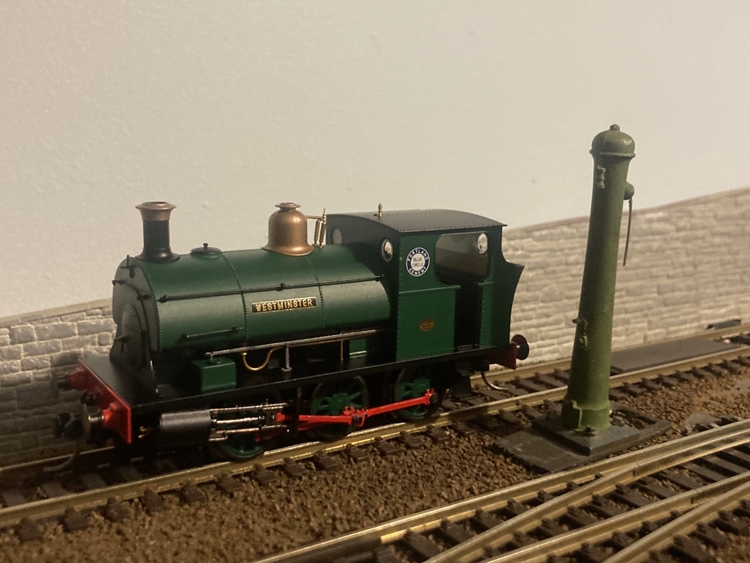
GNR and GSR goods vans in 1970s CIE use.
in General Chat
Posted
I visited Inchacore in 92-3 our Guide was extremely pissed off about the cutting of A Class bogies with recoverable components.
There was a similar story after NZR was privitised during the early 90s, the new owners went on a scrap drive to boost dividends clearing out stored and some in-service locos and stock. The PWD suddenly found themselves short of ballast wagons and other essential non-revenue stock.